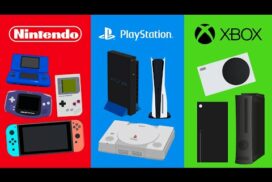Video Game Console Diagnostics: Identifying the Problem
If you’re experiencing issues with your video game console, such as it not reading discs or failing to turn on, it can be incredibly frustrating. In this article, we will provide expert tips and solutions to help you troubleshoot console issues and fix common console problems.
Whether you own an Xbox Series X or an Xbox One, our comprehensive guide will assist you in diagnosing and resolving common issues with your video game console. From disc reading problems to power and turn-on issues, display and audio problems, compatibility with Xbox 360 games, and controller connection issues, we’ve got you covered.
With step-by-step instructions and troubleshooting strategies, you’ll be able to troubleshoot your console effectively and identify the root cause of the problem. By following our tips and solutions, you can fix common console problems on your own and get back to your gaming adventures in no time.
Troubleshooting Disc Reading Issues
One common issue that gamers encounter with their consoles is difficulty reading discs. If your Xbox Series X or Xbox One is having trouble reading discs, there are a few steps you can take to troubleshoot the problem.
First, make sure the disc is clean and free from scratches or other damage. Use a soft, lint-free cloth to gently wipe the disc from the center outward. Avoid using abrasive materials that could further damage the disc.
If cleaning the disc doesn’t solve the issue, try inserting a different disc to see if it is being read. This will help determine if the problem is specific to a particular disc or if it’s a more general issue with the disc drive.
If multiple discs are not being read, it may indicate an internal hardware problem that requires professional repair. Contact the manufacturer or a qualified technician to diagnose and fix the issue.
Additionally, issues with the Blu-ray player app or power mode settings can also affect disc reading capabilities. Ensure that the Blu-ray player app is up to date by checking for any available updates in the console’s settings.
Power mode settings can be adjusted to optimize the console’s performance. Changing the power mode from “Instant-On” to “Energy-saving” may help resolve disc reading problems. This can be done in the console’s settings under “Power & Startup.”
Expert Tip: If you encounter persistent disc reading issues, consider switching to digital downloads or streaming services as an alternative to physical discs. This can help eliminate potential problems associated with disc drives.
Summary of Troubleshooting Steps:
- Clean the disc using a soft, lint-free cloth.
- Try a different disc to identify if it’s a specific disc issue.
- Contact manufacturer or technician for internal hardware problems.
- Update the Blu-ray player app.
- Adjust power mode settings.
Example Table: Common Disc Reading Issues and Solutions
| Issue | Solution |
|---|---|
| Xbox Series X not reading any discs | Contact manufacturer or technician for repair |
| Xbox One disc drive making grinding noise | Contact manufacturer or technician for repair |
| Xbox Series X reading some discs, but not others | Clean the discs and try again |
| Xbox One disc drive not ejecting discs | Manually eject the disc by inserting a pin into the small hole near the eject button |
Fixing Power and Turn-On Issues
Power-related problems can prevent your console from turning on or cause it to shut off unexpectedly. If your Xbox Series X or Xbox One won’t turn on, you can try troubleshooting the power issues with these steps:
- Reset the power supply: Unplug the power cord from the console and the electrical outlet. Wait for at least 10 seconds, then plug it back in. This can help reset the power supply and resolve any temporary issues.
- Check the outlet and power cord: Ensure that the electrical outlet is working by plugging in another device. If there’s no power, try using a different outlet. Examine the power cord for any signs of damage or frayed wires. If necessary, replace the power cord with a new one.
- Inspect the console for other issues: Look for any visible signs of a power supply problem, such as a blinking power button or unusual noises. If you suspect a fault with the internal power supply, it’s advisable to seek professional servicing to avoid further damage.
If these troubleshooting steps don’t resolve the problem, it’s best to consult an expert or contact Microsoft or Xbox support for further assistance.
Remember, dealing with power issues requires caution and expertise. If in doubt, seek professional help to avoid causing further damage to your console.
| Issue | Troubleshooting Steps |
|---|---|
| Xbox Series X won’t turn on |
|
| Xbox One power supply problem |
|
Resolving Display Issues
Display issues can be a frustrating experience when using your Xbox Series X. From a lack of signal to the TV to incorrect resolution settings, these problems can hinder your gaming experience. If you’re encountering troubles such as no signal to the TV or a corrupted image, follow the steps below to troubleshoot and resolve these display issues.
- Update your TV firmware: Ensure your TV is running the latest firmware to avoid compatibility issues with your Xbox Series X. Visit the manufacturer’s website or refer to your TV’s user manual for instructions on how to update the firmware.
- Boot into safe mode: If the problem persists, try booting your console into safe mode. This will allow you to access the console’s settings in a minimal environment. To enter safe mode, follow these steps:
- Power off your Xbox Series X.
- Press and hold the power button on the front of the console until you hear a startup chime. Release the power button after the second startup chime.
- Connect your controller using a USB cable.
- Choose the “Reset display settings” option from the menu that appears on the screen.
- Follow the on-screen instructions to adjust the resolution settings.
- HDMI 2.1 standard and variable refresh rate: In some cases, display problems on the Xbox Series X can be caused by issues with the HDMI 2.1 standard or variable refresh rate. Check if your TV supports these features and consider disabling them temporarily to see if it resolves the issue.
By following these troubleshooting steps, you can effectively troubleshoot and resolve display problems on your Xbox Series X and ensure a seamless gaming experience.
Fixing Audio Problems
If you’re experiencing audio crackling or other sound issues while playing games on your console, there are several troubleshooting steps you can take to resolve these problems.
First, ensure that your headset is properly connected and compatible with your Xbox Series X or Xbox One console. Check that all cables are securely plugged in and that the headset is correctly seated in the headphone jack.
If the issue persists, try adjusting the audio settings on your console. Navigate to the audio settings menu and make sure the volume levels are appropriate and that no audio enhancements or effects are enabled. It may also be worth experimenting with different audio output settings to see if that resolves the problem.
Updating the console’s software can also help fix audio issues. Make sure your console is running the latest system software to ensure compatibility with your headset and to benefit from any bug fixes or improvements that may address audio problems.
If you’re using a wireless headset, check the battery levels and ensure the headset is properly paired with your console. Weak battery levels or a weak wireless connection can cause audio crackling or other issues.
Common Audio Troubleshooting Tips:
- Check headset connection and compatibility
- Adjust audio settings on the console
- Update console software
- Check battery levels and wireless connections for wireless headsets
If you’ve tried these troubleshooting tips and are still experiencing audio problems, it’s possible that there may be an issue with your headset or console hardware. In such cases, it may be helpful to consult the documentation provided with your headset or reach out to the manufacturer’s support team for further assistance.
Remember, troubleshooting audio issues can sometimes require a combination of software and hardware solutions. By following these steps and ensuring proper connection and compatibility, you can maximize your gaming experience without any distracting audio problems.
Troubleshooting Xbox 360 Compatibility
While the Xbox Series X offers backward compatibility for many Xbox 360 games, some users may encounter issues when trying to play these games on the newer console. These compatibility problems can be frustrating, but there are steps you can take to resolve them.
One common reason for Xbox 360 games not launching on the Xbox Series X is compatibility issues. The newer console may not fully support certain games due to differences in hardware or software architecture. It’s important to note that not all Xbox 360 games are compatible with the Xbox Series X, so be sure to check the official list of supported games before attempting to play.
Software bugs can also contribute to compatibility issues. Game updates and console firmware updates can help resolve these bugs and improve compatibility. Make sure to check for updates regularly and install them when available. Additionally, clearing the console’s cache can sometimes resolve issues related to game launching.
Verifying game licenses is another troubleshooting step that can help resolve compatibility problems. If you have digital copies of Xbox 360 games, ensure that your account is properly signed in and authorized to play those games on the Xbox Series X. If you’re using physical discs, check for any scratches or damage that may be preventing the console from reading the game properly.
Configuring the correct settings on your Xbox Series X can also play a role in resolving compatibility issues. Some games may require specific settings to be enabled or disabled for optimal performance. Check the game’s documentation or online forums for any recommended settings that could improve compatibility.
Example of Xbox 360 Compatibility Issues
“I recently purchased an Xbox Series X and was excited to play my favorite Xbox 360 game. However, when I inserted the disc, the console wouldn’t recognize it. I tried restarting the console and cleaning the disc, but it still wouldn’t work. After doing some research, I realized that the game I was trying to play wasn’t compatible with the Xbox Series X. I was disappointed but glad to finally understand the issue.”
Troubleshooting Xbox 360 Compatibility – Step by Step
- Check the official list of supported Xbox 360 games for the Xbox Series X.
- Update your Xbox Series X console firmware and game software.
- Clear the console’s cache to resolve any potential software bugs.
- Verify your game licenses to ensure they are properly authorized.
- Check physical discs for scratches or damage that may affect compatibility.
- Configure game-specific settings for optimal performance.
Xbox 360 Compatibility Troubleshooting Checklist
| Steps | Result |
|---|---|
| Check compatibility list | Make sure the Xbox 360 game is supported |
| Update console firmware | Ensure the latest updates are installed |
| Update game software | Check for any available updates |
| Clear console cache | Resolve potential software bugs |
| Verify game licenses | Ensure proper authorization for digital copies |
| Check disc condition | Look for scratches or damage |
| Configure game settings | Optimize settings for compatibility |
In conclusion, encountering compatibility issues when trying to play Xbox 360 games on the Xbox Series X is not uncommon. By following the troubleshooting steps outlined above, you can increase the chances of successfully launching and playing your favorite Xbox 360 titles on the newer console. Remember to regularly check for updates, verify licenses, and configure the appropriate settings for optimal compatibility.
Fixing Controller Connection Issues
If you’re having trouble connecting your controller to your Xbox Series X, it can be frustrating. But don’t worry, there are a few potential solutions you can try to troubleshoot and fix the problem.
- Ensure proper sync: First and foremost, make sure that the controller is properly synced with the console. Follow the manufacturer’s instructions to establish a strong connection between the controller and your Xbox Series X.
- Update controller firmware: Outdated firmware can sometimes cause connectivity issues. Check for any available updates for your Xbox Series X controller and install them. This can often resolve compatibility problems and improve connection stability.
- Check for physical damage: Examine your controller for any physical damage, such as worn-out buttons, loose cables, or broken components. If you notice any issues, it may be necessary to repair or replace the controller.
If you’ve tried the above steps and your Xbox Series X controller is still not connecting, it’s time to seek assistance from Microsoft or Xbox support. They have dedicated teams to help diagnose and resolve more complex connection issues.
Don’t let connection problems hold you back
Having a reliable controller connection is essential for an enjoyable gaming experience. By troubleshooting and addressing controller connection problems, you can get back to gaming without interruptions or frustrations.
Conclusion
Troubleshooting problems with your video game console can be a frustrating experience, but with the right tips and solutions, you can often resolve these issues on your own. By following the steps outlined in this article, you’ll be well-equipped to diagnose and fix common problems with your Xbox Series X or Xbox One.
Whether you’re dealing with disc reading errors, power and turn-on issues, display problems, audio glitches, compatibility concerns, or controller connection difficulties, the troubleshooting tips provided here will help you navigate through these challenges.
However, if you encounter any persistent issues that you can’t resolve or if you require professional repair, don’t hesitate to reach out to Microsoft or Xbox support. They have the expertise and resources to assist you further.
FAQ
How can I troubleshoot disc reading issues on my Xbox Series X or Xbox One?
First, make sure the disc is clean and free from scratches or damage. If multiple discs are not being read, it may indicate an internal hardware problem that requires professional repair. Additionally, issues with the Blu-ray player app or power mode settings can also affect disc reading capabilities.
What should I do if my Xbox Series X or Xbox One won’t turn on?
You can try resetting the power supply by unplugging it for 10 seconds and then plugging it back in. It’s also important to check the outlet and power cord for any issues. If these steps don’t resolve the problem, there may be a fault with the internal power supply that requires professional servicing.
How can I resolve display issues on my Xbox Series X?
First, make sure your TV is updated to the latest firmware. If the problem persists, you may need to boot your console into safe mode and adjust the resolution settings. In some cases, issues with the HDMI 2.1 standard or variable refresh rate can also cause display problems.
What should I do if I’m experiencing audio problems on my console?
Ensure that your headset is properly connected and compatible with your console. Adjusting audio settings or updating the console’s software may also help resolve these issues.
Why won’t my Xbox Series X play Xbox 360 games?
This could be due to compatibility issues or software bugs. Checking for updates, verifying game licenses, and ensuring the correct settings are configured can help resolve these problems.
How do I fix controller connection issues on my Xbox Series X?
First, ensure that the controller is properly synced with the console. You can also try updating the controller’s firmware or checking for any physical damage. If these steps don’t resolve the issue, contacting Microsoft or Xbox support may be necessary.
What if I encounter persistent issues or need professional repair for my console?
If you encounter any persistent issues or require professional repair, reach out to Microsoft or Xbox support for assistance.












